Cultivation of Ginger
Cultivation of Ginger
Ginger (Zingiber officinalis Roscue) belongs to the family–Zingiberaceae. It is a thin monocotyledonous rhizomatous perennial spice, It is one of the significant flavors everywhere throughout the world and India is the largest producer, buyer, and exporter of the world. It is promoted in various structures, for example, crude ginger, bleached dry ginger, ginger treats, ginger powder, ginger oil, ginger squash, ginger brew, ginger chips, etc
In India, it is cultivated in the states like Kerala, North Eastern States, Sikkim, Himachal Pradesh, Odisha, West Bengal, Karnataka, Andhra Pradesh, and Maharashtra these states have 65% share of the total ginger production
Medicinal Uses Ginger
- Ginger cures pain and inflammation, making it is very important in managing arthritis, headaches, and menstrual cramps.
- Ginger provides a warming effect and stimulates circulation.
- Ginger is very useful to inhibit rhinovirus, which causes the common cold.
- Ginger reduces gas and painful spasms in the intestinal tract.
- Ginger can effectively prevent stomach ulcers which are caused due to nonsteroidal anti-inflammatory drugs, such as aspirin and ibuprofen.
Climate and Soil Requirement for Ginger cultivation ;
Ginger is the crop of the warm and humid conditions and can be cultivated in both irrigated and rain-fed conditions it is cultivated 1500 meters above sea level but its cultivation suits well between 300 to 900 meters from the sea level. Ginger cultivation requires moderate rainfall at the time of sowing until the rhizome germinate and during its vegetative growth require a fairly good amount of rains while dry conditions are required before one month of its harvesting.
it requires well-drained soil which posses clay sediment with a good amount of organic content the pH level of the soil must be around 6 to 6.5 it is advisable not to take ginger in the same field again and again because the intake of nutrients from the soil in the ginger crop is too high.
Land Preparation for Ginger Cultivation ;
Plow the field at least two times and thereafter harrow the field properly to pulverize the field add the FYM @ 3 to 5 mt /hectare.
For the rainfed crop prepare a raised bed of 15 cms height with a width of 1meter and length of 3 to 6 meter depending upon the convenience of cultivation There should be a 30 cms gap between the two beds for drainage channel. Areas which are prone to rhizome rot and nematode infestations can be overcome by the use of the polythene cover ( Solarization ) for minimum 40 days
Improved Varieties of Ginger ;
|
Variety |
Yield t/Hac |
Maturity days |
Released From |
|
|
IISR Vardha |
22.6 |
200 |
IISR , Kozhikode |
|
|
Suprabha |
16.6 |
229 |
Orissa Ag Uni. ,Potungi |
|
|
Suruchi |
11.6 |
218 |
Orissa Ag Uni. ,Potungi |
|
|
Surbhi |
17.5 |
225 |
Orissa Ag Uni. ,Potungi |
|
|
Himagiri |
13.5 |
230 |
YS Parmar Uni , Solan |
|
|
IISR Mahima |
23.2 |
200 |
IISR , Kozhikode |
|
|
II SR Rajatha |
22.4 |
200 |
IISR , Kozhikode |
|
|
Athira |
21 |
220 – 240 |
Kerla Ag. Uni ,Trissur |
|
|
Karthika |
19 |
220 – 240 |
Kerla Ag. Uni ,Trissur |
|
|
Aswathi |
23 |
220- 240 |
Kerla Ag. Uni ,Trissur |
|
Area- wise Poular Varietes of Ginger ;
|
Area- wise Popular Varieties |
Area of cultivation |
|
Rio-de-Janeiro |
Exotic from Brazi |
|
China |
Exotic from China |
|
Thingpui, Jorhat, Nadia, Maran |
Assam |
|
Narasapattam |
Andhra Pradesh |
|
Wynad local, Wynad Manantody, EmadKuruppampadi |
Kerala |
|
Karakkal |
Karnataka |
Seed Rate of Ginger ;
1500 to1800 kg /hectare seed tubers (Rhizomes) are recommended for the plains planting and 2000 to 2500 kg/hectare for the hilly area planting it should be free from all kinds of diseases and pest
Ginger Planting time/Season ;
Ginger can be planted in the first fortnight of may on the western coast of India with the arrival of pre-monsoon showers. Whereas the area under the irrigated conditions may be planted well in advance in the month of mid-Feb to Early March. The early planting of Ginger results in high yields and compatibility of low disease incidence due to the summer showers received sufficient to crop.
Method of Planting ;
Ginger planting takes place through the small rhizomes which are commonly called ‘BITS’. The bits/tubers/rhizomes have 2.5 to 5. cms in length and possess a weight of around 20 -25 gms. with one or two viable nodes are most preferred for the planting of the ginger crop. The bits are separated from the mother rhizomes for planting and transplanted into the main field with a spacing of 30 X 25 cm and approximately following the depth of 4-5 cms.in the furrows
Mulching ;
Mulching plays a very important role in ginger cultivation In a season two mulches should be given one just after the sowing of ginger and another one after 45 days of planting. The first mulching will conserve moisture to help in germination. Both mulching can be achieved by quick rotting leaves @ 25 tonnes per hectare. or dry leaves @ 9 tonnes of leaves per hectare. If the leaves are not available then mulching can be achieved by sowing the seeds of sunn hemp, green gram, horse gram, common sesbania, and cluster bean on the borders of the bed which will further be mulched into the soil after the onset of the monsoon.
Crop Rotation and Intercropping ;
The ginger crop can be rotated with other crops like; tapioca, chilies, maize, and dry paddy in rainfed conditions whereas under irrigated conditions vegetables and maize. In some areas, ginger is also cultivated with mixed crops like ragi, red gram, and castor.
Ginger can also be grown as an intercrop with coconuts, Arecanut, coffee, orange, and litchi plantations. Ginger is a shade-loving crop in some hilly areas like Himachal it is also grown along with tomato, Chillies, Amaranthus, and maize
Manuring;
Ginger is a highly nutrient-exhaustive crop hence it requires heavy manuring The recommended dose of manures may vary depending upon the locality, soil types, previous crop, etc.
The ideal manuring recommendation is to apply well-decomposed FYM @ 25 tonnes per hectare at the time of planting The application of neem cake @ 2 tonnes/hac will also help ginger to fight against rhizome rot disease and it will also enhance the yield of ginger.
The recommendation of N:P:K: is 75:50:50 kg per hectare apply 1/3 rd of nitrogen and a full dose of Phosphorous and half dose of potassium at the time of planting as a basal dose after the 40 days of transplanting 1/3 rd dose of nitrogen 25 kg of K should be applied rest of the dose should be given after the 90 days of planting.
Irrigation ;
The ginger crop requires 1350 to 1550 mm of rainfall for obtaining a good yield The critical stages of irrigation in ginger are germination, rhizome initiation (45 days after Planting ), and rhizome development stage (90 days after Planting) The first irrigation must be given just after the planting and subsequent irrigation should be given at the interval of 8 to 12 days.
Weed Management ;
Depending upon the weed intensity two to three weeding are required in ginger which should be done well before the fertilizer application and mulching Care must be taken during weeding process so that the root and stem of the plant will not get affected.
Disease and Pest Management in Ginger ;
Disease Management;
|
Disease |
Symptoms |
Control |
|
Tuber rot disease /Soft Rot
|
1)This disease is soil-borne 2) The fungus multiplies with build up of soil moisture with the arrival of south west monsoon. 3)Younger sprouts are most susceptible to this disease. 4) The collar region of the pseudostem becomes water-soaked and the rotting spreads to the rhizome resulting in soft rot with characteristic foul smell. |
1) Use disease free tuber for germination 2)Tubers are well treated with Mancozeb0.3% or metalaxyl mancozeb 0.125% for 30 minutes before storage and once again before planting 3)Drenching at 30 and 60 days after planting reduces the incidence of the disease |
|
Bacterial wilt
|
1) It seed and Soil borne disease . Water soaked spots can be seen on the collar region of the pseudostem and which grows upwards and downwards. 2)During the advanced stage, the plants shows a severe yellowing and wilting symptoms. dark streaks can be observed on psedostem 3)The ffected pseudostem and rhizome extrudes milky ooze from the vascular strands when it is pressed. Finally rhizomes rot emit a foul smell. |
1)Seed rhizomes for planting should be disease free affected 2)Remove the clumps carefully without spilling the soil around and the affected area and surrounding areas 3)Drench field with copper oxychloride 0.2%. |
|
Leaf spot
|
1)The disease initiate as water soaked spots and later on turns as a white spot surrounded by dark brown margins and yellow halo.2) The lesions enlarge and adjacent lesions coalesce to form necrotic areas. |
The disease can be controlled by spraying of Bordeaux mixture 1% or mancozeb 0.2% or carbendazim 0.2%, with the appearance of disease symptoms. |
|
Rhizome rot disease
|
1) Areal Symptoms of Nematode pests of ginger are stunting, chlorosis, poor tillering and necrosis of leaves. 2) Characteristic root galls and lesions that lead to rotting are generally observed in roots. 3)The infested rhizomes have brown, water soaked areas in the outer tissues. 4) Nematode infestation aggravates rhizome rot disease. |
It can be controlled by treating infested rhizomes with hot water (50°C) for 10 minutes, using nematode free seed rhizomes and solarizing ginger beds for 40 days. |
Pest Management in Ginger;
|
Pest |
Symptom |
Control |
|
Shoot Borer
|
2)Its larvae bore into pseudostems and feed on internal tissues which results in yellowing and drying of leaves of infested pseudostems. 2) The presence of a bore-hole on the pseudostem through which frass is extruded and the withered and yellow central shoot is a characteristic symptom of pest infestation |
1)This can be managed by spraying malathion (0.1%) at 21 day intervals during July to October.
2) The Infested plants should be removed. |
|
Rhizome scale
|
1) It infests rhizomes in the field (at later stages) and in storage. 2)Adult (female) scales are circular (about 1 mm diameter) and light brown to grey and appear as encrustations on the rhizomes. 3)They feed on sap and when the rhizomes are severely infested, they become shriveled and desiccated affecting its germination. |
1)Treat the seed rhizomes with quinalphos (0.075%) (for 20-30 minutes) before storage and also before sowing in case the infestation persists. The seed rhizome may be stored in sawdust + Strychnos nuxvomica leaves (dried) after seed treatment. |
|
Minor pests
|
1)Larvae of leaf roller (Udaspes folus) cut and fold leaves and feed from within, and are generally seen during the monsoon season. 2)The adults are medium sized butterflies with brownish black wings with white spots; the larvae are dark green. |
Spraying of malathion 0.1% is adequate for the management of this pest. |
|
Root grubs
|
It occasionally feed on tender rhizomes, roots and base of pseudostems causing yellowing and wilting of shoots |
can be controlled by drenching the soil around the rhizomes with Chloropyriphos (0.075%).
|
Harvesting ;
Stop the irrigation one month before the harvesting of the ginger crop and care must be given while digging the ginger clums with the help of a spade or digger The crop is ready to harvest after 6 to 8 months after the planting when the leaves of ginger became yellow and start drying gradually. Early harvesting of ginger is done for processing and vegetable purposes It starts after 175 to 185 days of planting depending upon the market demand Early harvesting of ginger is used for fewer fibers and pungency For dry purposes delayed harvesting is performed

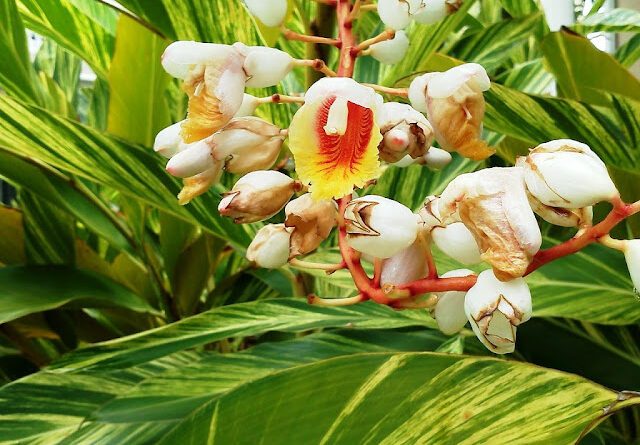

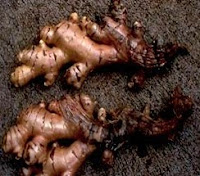
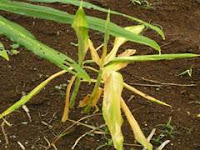

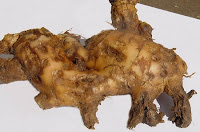

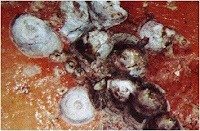

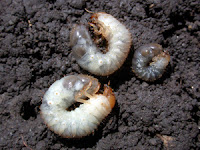

Pingback: Multi-layer farming Model Objective Process and Advantages - Agrovista-Farming